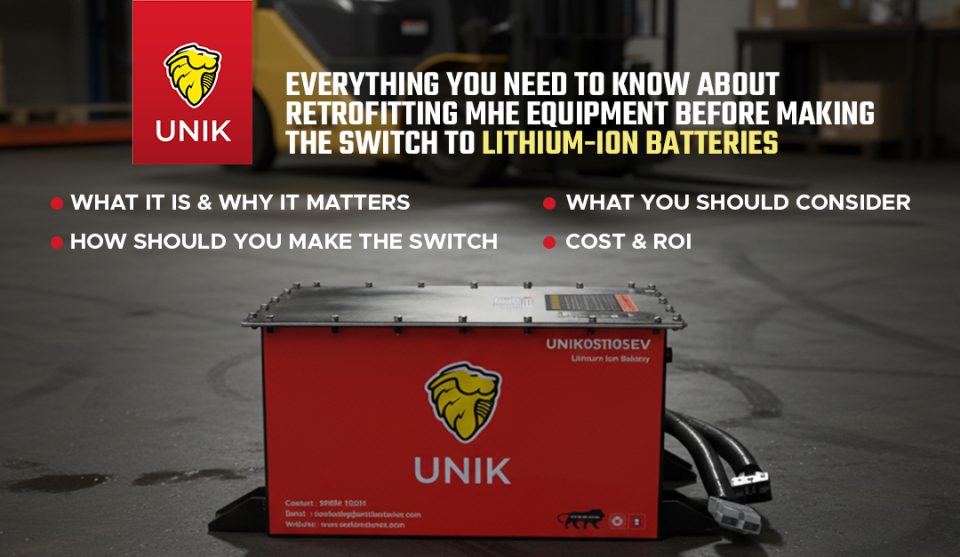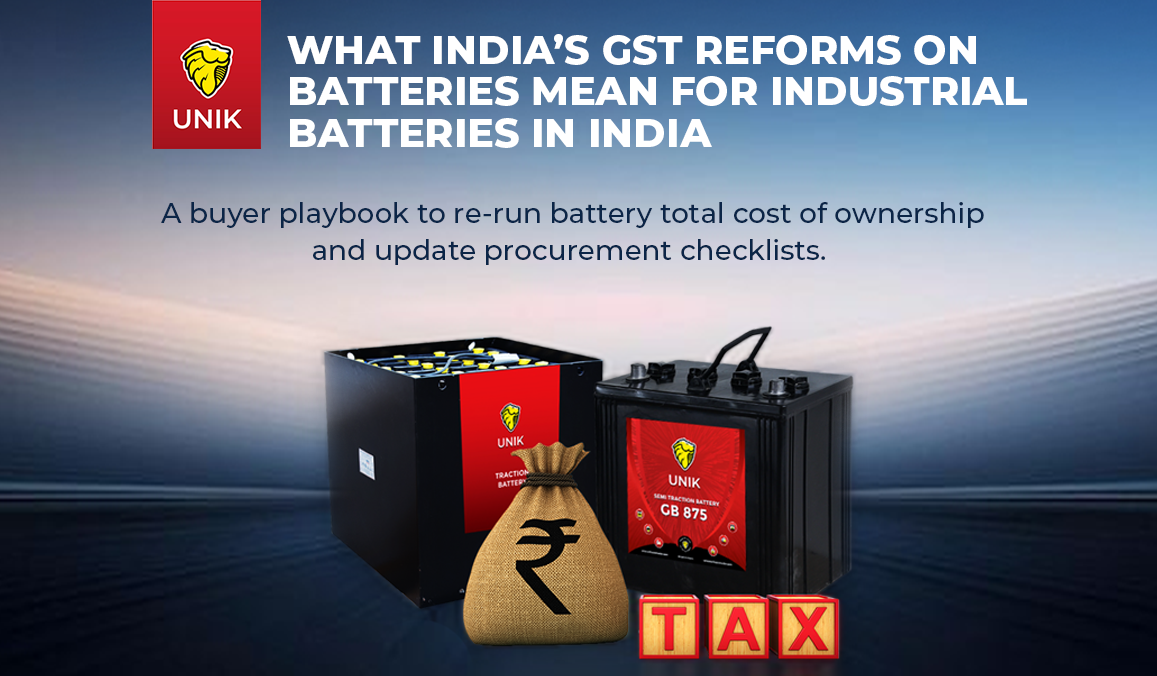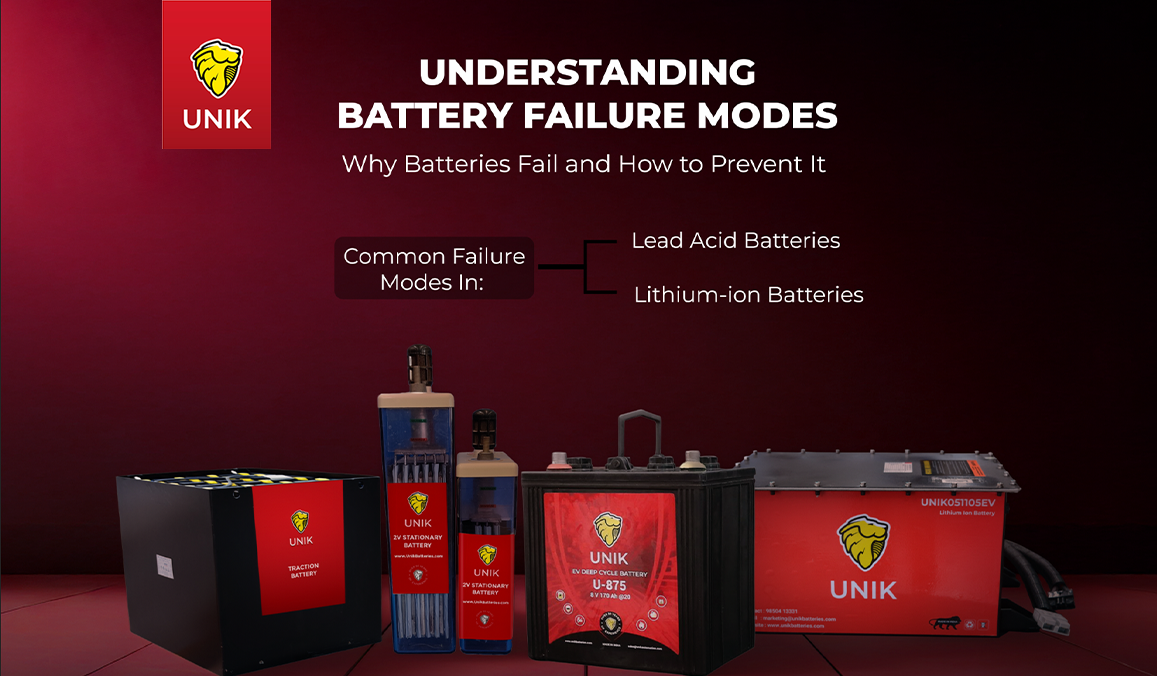Why Depth of Discharge (DoD) Matters for Industrial Battery Lifespan
In the world of industrial batteries, performance is not just about capacity—it’s about how long that energy lasts. One of the most crucial, yet often overlooked, factors affecting the longevity of batteries is Depth of Discharge (DoD). Whether you're powering forklifts, backup systems, or other heavy-duty equipment, managing DoD can have a significant impact on both operational efficiency and overall costs.
What is Depth of Discharge (DoD)?
Depth of Discharge (DoD) refers to the percentage of a battery's total capacity that has been used during a discharge cycle. For example:
- A 100% DoD means the battery has been completely discharged.
- A 40% DoD means 40% of the battery's capacity has been used, leaving 60% of the charge remaining.
Example:
If a 100Ah battery is discharged by 40Ah, it reaches a 40% DoD.
DoD is a key factor in determining the lifespan of a battery. Different battery chemistries—whether lead-acid, lithium-ion, or others—perform optimally at different DoD ranges. Exceeding these recommended limits too frequently can degrade the battery's performance over time.
How DoD Affects Battery Lifespan
The relationship between Depth of Discharge and battery lifespan is inverse: the deeper the discharge, the fewer charge-discharge cycles the battery will be able to endure. A cycle refers to the full discharge and recharge of the battery.
- For instance, a lead-acid battery fully discharged to 100% DoD may last about 200 cycles.
- On the other hand, discharging it only to 30% DoD can extend its life to over 1,200 cycles.
This difference in cycle life highlights the importance of managing DoD carefully to extend battery longevity.
Lithium-Ion vs. Lead-Acid: Tolerances for DoD
- Lead-acid batteries typically operate best when discharged to a maximum 50% DoD. Exceeding this can lead to quicker degradation of the battery, reducing its operational life.
- Lithium-ion batteries, in contrast, are often designed to handle deeper discharges, with 80–90% DoD being manageable in many cases. This gives them a longer life span in applications requiring frequent discharges. For example, lithium-ion batteries can often withstand thousands of cycles at moderate discharges, making them ideal for high-demand applications.
Each type of battery chemistry has its strengths and is suited to different operational needs, making it important to choose the right one for the specific use case.
Economic Impact of DoD on Industrial Battery Costs
- While deeper discharges may provide more energy per use, they shorten the overall lifespan of the battery, which can result in more frequent replacements and higher operational costs.
- Lead-acid batteries, despite their lower upfront cost, may require more frequent replacements when discharged deeply, increasing long-term costs.
- Lithium-ion batteries, although initially more expensive, often have a longer lifespan due to their ability to tolerate deeper discharges without as much degradation, making them more cost-effective in the long run for certain high-demand applications.
Both technologies have their place, depending on the specific needs and budget constraints of the business.
Best Practices for Managing Depth of Discharge (DoD)
To maximise the lifespan of your batteries and reduce replacement costs, it’s essential to follow these best practices:
- Understand your battery’s specifications: Always consult the manufacturer’s guidelines to understand the maximum recommended DoD for your specific battery.
- Avoid deep discharges: Regularly recharge your battery before it reaches 20–30% of its capacity. For lead-acid batteries, it’s best to recharge when DoD reaches 50–60%.
- Implement Battery Management Systems (BMS): A BMS tracks DoD in real-time and provides alerts to ensure the battery doesn’t reach critical discharge levels, helping to protect the battery from unnecessary damage.
- Properly size your battery system: Ensure your battery system is large enough to operate without frequently discharging more than 30–50% of the total capacity.
- Train your operators: Proper training is essential to ensure that all operators understand how to monitor DoD and avoid deep discharges.
Managing Depth of Discharge (DoD) is a crucial element of battery management for businesses relying on industrial batteries. Whether using lead-acid, lithium-ion, or any other chemistry, keeping DoD within recommended limits will significantly extend the life of your batteries, reduce operational downtime, and improve cost efficiency.
Investing in intelligent monitoring systems, training operators, and adhering to DoD guidelines will not only extend battery lifespan but also contribute to more sustainable operations.
Contact us
to know more about how our batteries can meet your DoD requirements and optimise your industrial operations today!






